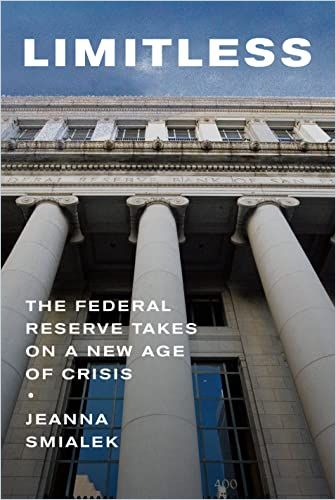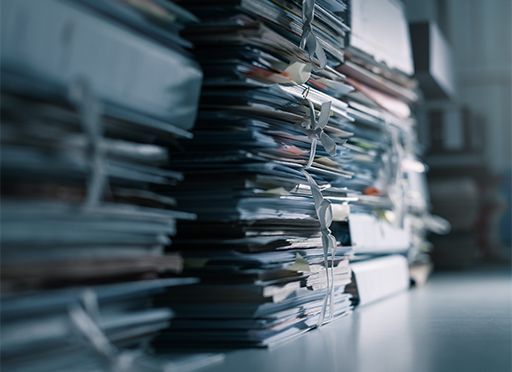New York Times economic reporter Jeanna Smialek provides an illuminating overview of the US Federal Reserve’s history, policies, and potential future role.

The Fed, 2024
Jeanna Smialek — who reports on the Federal Reserve and the US economy for The New York Times — offers an intriguing look into the Fed, highlighting political controversies centered on the its actions during the 2008 financial crisis and the COVID-19 pandemic.
The US Federal Reserve
Financial crashes occurred regularly in the United States in the 19th and early 20th centuries. Lawmakers created the Fed in 1913. By its willingness to intervene in a crisis, a central bank can calm markets and unwind its backstopping purchases when the situation calms, with little or no cost to taxpayers.
What the bankers designed was not an arm of government so much as a private, government-sponsored organizing body, one that could halt panics and make sure that reserves — so often stuck in far-flung places and frozen entirely amid panics — would be centralized.
Jeanna Smialek
Fed policy was too lax in the 1920s and too restrictive after the 1929 stock market crash. After the collapse, the Fed did not address the rise of financial asset prices and the shrinking capacity of banks to provide money, creating the infamous deflationary spiral known as the 1930s Great Depression. Fed chair Marriner S. Eccles proved instrumental in developing the Banking Act of 1935. The Treasury-Fed Accord of 1951 further formalized the Fed’s independence.
In the late 1960s, the United States was spending on domestic social programs and the escalating Vietnam War, but not countering this spending with tax increases. Then-Fed chair Arthur Burns failed to raise interest rates to rein in inflation. The steely determination of Fed chair Paul Volcker to bring down runaway prices in the 1980s exemplifies a central banker remaining independent and extinguishing inflation for a generation. The two contrasting leaders provide a paradigm that haunts central bankers.
In March 2020, the economic implications of the pandemic shocked financial markets, as investors liquidated their holdings. Between March 1 and the end of April, the Fed’s Treasury portfolio — thanks to massive quantitative easing (QE) — rose from $2.5 trillion to $4 trillion, the same increase that occurred during the previous three post-2008 QE programs. The Fed was holding one-quarter of all Treasury debt and had shored up company bonds, corporate commercial paper, and the markets for state and municipal debt by creating dollars from nothing and exchanging them for assets that private investors had liquidated.
After the 2008 crash in property prices, many criticized the Fed. An easy-money environment, intended to stimulate spending and investing, inherently fuels asset bubbles that make the rich richer. Low interest rates encourage nonfinancial businesses to load up on debt, which proved a source of weakness when the pandemic hit and interest rates returned to normal levels.
Central bankers must apply policy based on the general temperature of an economy — whose metrics include inflation, unemployment, labor shortages, and job vacancy rates — and not necessarily to burst asset bubbles.
When interest rates remain low, regulation becomes important. Chair Alan Greenspan famously admitted that the 2008 subprime mortgage securitization fiasco discredited his light-touch regulatory approach, which had relied on the self-interest of financial actors to prevent losses. New Fed regulations now mean that banks that are systemically important to the financial system can better cope with panics.
The central bank wanted to be transparent not because it made policy more effective — the Bernanke innovation —but because it wanted the public to feel heard.
Jeanna Smialek
Starting with the leadership of Ben Bernanke, the Fed has become more open and transparent. It holds press conferences and publishes various materials that communicate the expectations and thinking of Fed decision makers. Chair Jerome Powell’s the “Fed Listens” town hall meetings seek to demonstrate that the Fed serves the whole country.
The Full Employment Mandate
Before taking over in 2014 as Fed chair, Janet Yellen was a labor economist, and studies justify Yellen’s cautious judgments. Powell’s Fed raising rates in 2018 and 2019 negatively affected hiring, while inflation was nowhere to be seen.
The Powell-initiated review of Fed policy changed the institution’s stance: The Fed would no longer raise interest rates proactively when the economy hit the theoretical full-employment state. It would wait for inflation to rise above 2% for a period of time before acting. The policy tied in with feedback from its Fed Listens meetings, which highlighted that when unemployment rates were low, in some locations and with some minority groups of workers, a further driving down of unemployment was still worthwhile. The Fed believed it had the policy space to deliver to Main Street.
Interest Rates
The war in Ukraine and pandemic-related supply chain disruptions and labor shortages caused inflation to return. At first, the Fed believed inflation would pass quickly after post-pandemic conditions faded. But inflation persisted, and the economy exhibited high job vacancies, growing wage demands, and climbing prices.
Chair Powell survived President Donald Trump’s hectoring for more stimulative monetary conditions, as well as calls to make the Fed directly politically accountable. Other issues arose, such as the ultraprivileged backgrounds of Fed leaders, dubious personal equity trades by central bank officials, and Fed staffers moving into lucrative jobs in the private sector.
Fed officials often talk about ‘staying in their lane,’ but that lane has been expanding into an avenue.
Jeanna Smialek
Powell skillfully navigated the partisan arguments, easing concerns that Democrats sought to hijack Fed programs for social policy purposes and ensuring that the Fed did not only bail out the financial sector. The Fed does what it deems necessary during crises, when politicians often cannot agree.
For Experts and Beginners
Jeanna Smialek offers an intensely readable and clear overview of the Fed during times of crisis. Her intelligence and knowledge of her subject render her book a perfect insider’s guide that is never inaccessible to laypeople. This is its charm and most positive feature; if you know nothing of the Fed, you will learn a lot. If you’re in the finance world or the part of the US government that deals with finance, Smialek offers a primer that will add to your education. Smialek’s engaging book will help readers better understand the Fed’s true position in the political and financial systems, its capacities, and even its honest mistakes.






